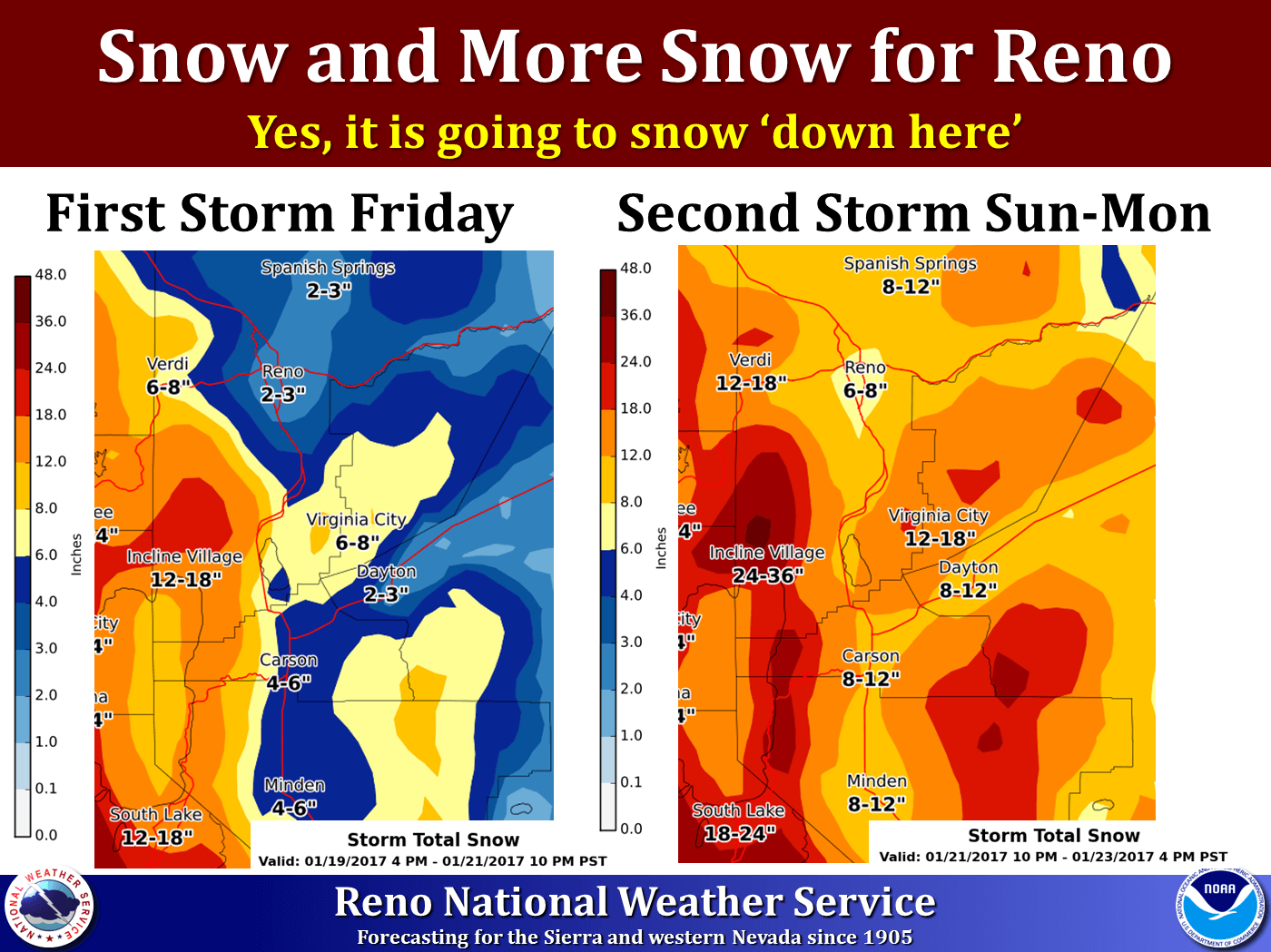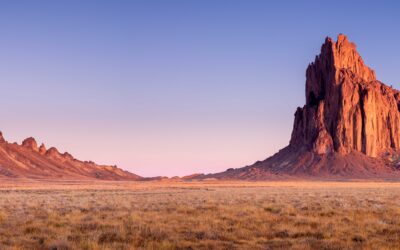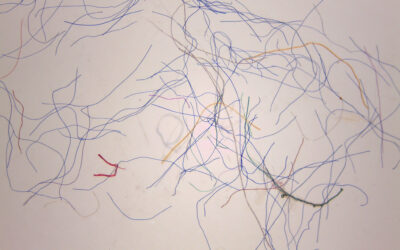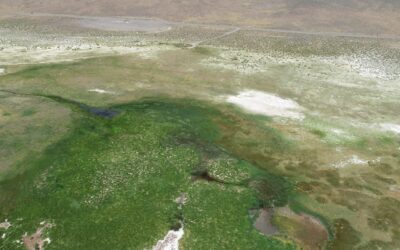Reno, Nev. (January 22, 2019): For meteorologists, effectively communicating weather forecasts and their related dangers is essential in maintaining the health, safety, and resilience of communities. A new study published by a team of researchers from the University of Nevada, Reno (UNR), the Desert Research Institute (DRI), and the National Weather Service (NWS) Reno suggests that effective communication isn’t only about sharing information on upcoming weather events—it’s about building trust and common ground between forecasters and the public.
A common focus of science communication research is the difficulty of communicating technical information about weather forecasts to the public, including the likelihood that the forecasted events will actually come to pass. However, personal risks and uncertainty about potential impacts also affect how people respond to and act upon information about subjects like weather forecasts.
In a study published in the Bulletin of the American Meteorological Society, researchers sought to investigate the effect of personal uncertainties on people’s responses to weather forecasts by analyzing posts by the NWS Reno on Facebook. Researchers analyzed a total of 470 Facebook posts by the NWS Reno and 6,467 user comments on the posts about high impact weather events from January to May 2017. This range overlapped with the Reno area’s record wet period during from October 2016 to April 2017, a time when the region’s residents were impacted by several high impact weather events.
The team’s analysis showed that the public’s uncertainty about weather forecasts isn’t usually technical—more often, it’s personal.
“The NWS Reno’s Facebook community engages far less with the technical uncertainties of forecasts than with the personal risks implied in those forecasts,” said Kathryn Lambrecht, Ph.D., lead author on the study and Assistant Director of the Composition and Communication in the Disciplines program at UNR. “People in this community frequently use the NWS posts to share their own experiences with weather, express concern, and reach out to family and friends, not to calculate the technical likelihood of a forecast.”
What’s more, this study’s results showed that posts that used “commonplaces”—or expressions of common values or norms among a community—generated the strongest responses, many of which acknowledged a connection or understanding between the NWS Reno and its followers on Facebook.

Most of the population in the Reno area is located in valleys where it only snows occasionally. Feet of snow can fall in the higher elevations of the Sierra Nevada with the Reno area receiving little to no snow accumulation, so the public often asks “Is it really going to snow down here [in the valley]?” The commonplace “down here” was added to what became a widely shared and commented forecast graphic on the NWS Reno Facebook page.
Because high-impact weather events can severely impact life and property, it is imperative that the public trusts the information coming from the National Weather Service or emergency managers. Commonplaces, this study revealed, can be an effective way for forecasters to build trust with the community and encourage behavioral changes—like changing driving routes or stocking up on sandbags—that ultimately promote public safety.
From here, the team is considering applying for more funding in order to scale up their research and see if their results are consistent in other regions beyond the Reno area.
Researchers on this study included a meteorologist, an atmospheric scientist, a STEM education expert, and a pair of rhetoricians, scholars who study how communication forms communities—an unusual combination of disciplines.
“Past research has shown that science communication benefits from bringing together multiple types of expertise,” Hatchett said. “Our group came together organically, and the result was a highly transdisciplinary project. Personally, I think it is one of the most unique and collaborative projects I have been a part of, which made it even more fun.”
This project was supported by the Nevada NASA Space Grant Consortium and the Desert Research Institute.
The full study, titled “Improving Visual Communication of Weather Forecasts with Rhetoric” is available online from the Bulletin of the American Meteorological Society: https://journals.ametsoc.org/doi/abs/10.1175/BAMS-D-18-0186.1
###
The Desert Research Institute (DRI) is a recognized world leader in basic and applied interdisciplinary research. Committed to scientific excellence and integrity, DRI faculty, students, and staff have developed scientific knowledge and innovative technologies in research projects around the globe. Since 1959, DRI’s research has advanced scientific knowledge, supported Nevada’s diversifying economy, provided science-based educational opportunities, and informed policy makers, business leaders, and community members. With campuses in Reno and Las Vegas, DRI is one of eight institutions in the Nevada System of Higher Education.
Nevada’s land-grant university founded in 1874, the University of Nevada, Renoranks in the top tier of best national universities by U.S. News and World Report and is steadily growing in enrollment, excellence and reputation. The University serves nearly 22,000 students. Part of the Nevada System of Higher Education, the University is home to the University of Nevada, Reno School of Medicine, University of Nevada Cooperative Extension and Wolf Pack Athletics. Through a commitment to world-improving research, student success and outreach benefiting the communities and businesses of Nevada, the University has impact across the state and around the world. For more information, visit www.unr.edu.


